Fruits that start with S are diverse and delicious, ranging from tropical options to common orchard picks. They come in all shapes, sizes, and colors, offering a wide spectrum of flavors from sweet to sour.
Many of these fruits are packed with essential vitamins, minerals, and antioxidants, making them a healthy choice for snacking or adding to various dishes.
Some of these foods beginning with S are perfect for eating fresh out of hand, while others shine in culinary creations. They’re enjoyed worldwide and adored for their unique tastes.
Then, uncover the many ways people often used to enjoy these fruits and find out some vegetable options with their names beginning with S.
36 Amazing Fruits That Start with S with Filters
Explore the fruits beginning with S, utilizing the filters to view them according to their usages, such as dishes, garnish, and vegetables.
Plus, let me introduce you to some national, exotic, and fruit vegetables that you’ve never known.
Strawberry
- Denmark
- For Beverages
- For Dishes
- For Garnish
- National
Strawberry is a vibrant fruit first grown by European gardeners in the 1700s. It’s known for its sweet taste, bright color, and a touch of sourness.
This fruit is ideal for making jams or added to cereals, yogurts, and porridge. Strawberries often feature tiny crunchy seeds on the outside of the fruit with green stems on top of them.
Depending on the environment and many other elements, strawberries can have various shapes, boasting a soft texture when fully ripe.
Sweet Orange
- For Beverages
- For Dishes
- For Garnish
Sweet orange is a valued citrus fruit found in Southern China, Myanmar, Northeast India, and more. Part of the citrus family, it features oily rinds and juicy pulps insides.
The fruit is often enjoyed fresh, in juices, or as a flavorful addition to dishes. The citrus fruit is prized for its sweet, juicy segments wrapped in a bright orange peel.
Sweet Pepper
- For Dishes
- Fruit Vegetables
Sweet pepper is a colorful fruit known for its bell shape and mild, sweet flavor. Unlike their spicy relatives, sweet peppers lack capsaicin, the compound that gives chili peppers their heat.
These peppers come in various colors, including green, red, yellow, and orange. Often used as a vegetable in cooking, they can be eaten raw, sautéed, roasted, or stuffed, adding a crunchy texture and vibrant color.
Sugar Baby Watermelon
- For Beverages
- For Dishes
The sugar baby watermelon is also named icebox melon because it is small enough to fit in the fridge. The heirloom is native to Oklahoma and was first introduced in 1956 by Woodside Seed Company.
The small and round melon weighs 8 to 10 pounds and measures 6 to 10 inches across. Compared to 120 days for a full-size watermelon, a sugar baby will ripen in 75 days.
This watermelon has a high sugar content, granting it an enjoyable sweetness along with a floral note.
Soursop
- Exotic
- For Beverages
Soursop is a tropical fruit known for its distinct, spiky green exterior and soft, white flesh filled with black seeds. Native to the American tropics, this fruit has a unique flavor that combines sweet and tart profile.
The creamy texture of soursop makes it ideal for smoothies, juices, and ice creams. Soursop is also valued for its medicinal properties, with parts of the plant used traditionally to treat various ailments.
Starfruit
- Exotic
- For Beverages
- For Garnish
Starfruit, or carambola, is a tropical fruit with a sweet and tangy flavor, originating from Southeast Asia. It’s easily recognizable by its unique five-point star shape diagonally.
The star-shaped fruit is great for fresh consumption, especially when it ripens. Starfruit pairs well with other fruits like bananas, kiwis, and strawberries, making it great for juices, smoothies, soups, and salads.
Satsuma
- For Beverages
Satsuma is a type of mandarin orange, known for its sweet flavor, easy-to-peel skin, and minimal seeds. Originating from Japan, this citrus fruit is typically smaller than other oranges, with a loose, leathery skin.
The flesh is tender, and juicy, making it a popular snack during the fall and winter months. They are often enjoyed fresh, in salads, or used in desserts and jams for their sweet and slightly tangy flavor.
Star Apple
- Exotic
Star apple is a tropical fruit from the Isthmus of Panama, having a perfectly round and waxy appearance. When cut in half, it offers a star shape, giving it its name.
The fruit tastes sweet and earthy, like a mix of condensed milk, grapes, and lychees. The best way to eat it is to cut it open and scoop out the inside with a spoon.
This fruit has a smooth, shiny skin that ranges in color from green to purple. Star apples are also used in desserts and smoothies thanks to their natural sweetness.
Sapodilla
- Exotic
- For Dishes
Sapodilla is a tropical fruit known for its grainy, sweet, and malty flavor. Popularized in Central America, this brown-skinned fruit has a fuzzy skin texture and contains a few black seeds.
The fruit’s flesh is pale yellow to earthy brown and is rich in nutrients. Sapodilla is commonly eaten fresh but can also be used in smoothies, desserts, and jams.
Due to its naturally high sugar content, it’s a popular natural sweetener.
Santol
- Exotic
Santol is a tropical fruit known for its unique taste and texture, native to Southeast Asia. The fruit is round with a thick, inedible skin that ranges from yellow to light brown when ripe.
Inside, it contains a white, juicy pulp that encases three to five seeds. The taste of santol can vary from sweet to sour, depending on the variety and ripeness.
Saigon Mango
- For Beverages
- For Dishes
Saigon mango is a sweet fruit introduced to the United States from Southeast Asia in 1902, named after the former Saigon city, now Ho Chi Minh City, Vietnam.
It’s favorite for its sweet and juicy taste, often eaten with sticky rice or sliced. You can eat it green with salt, a common Vietnamese snack.
This fruit is oval to ovate with a pointed apex, often having a small lateral beak, and weighs under a pound at maturity. In the States, Saigon mangoes mature between June and July.
Sweet Lime
- For Beverages
- For Garnish
Sweet lime is known by several names and changes color from green to orange-yellow when ripe.
Used in sauces, desserts, and as a garnish in drinks, the citrus offers a hint of sweetness with a strong lime scent. Ideally, sweet limes must be picked at full maturity since they don’t ripen after harvest.
Sugar Palm Fruit
- Exotic
- For Dishes
Sugar palm fruit is known by many names, like ice-apple sugar palm, toddy palm, or palmyra palm, and grows in clusters.
Available widely in South and Southeast Asia, the green and round fruit turns yellowish-brown and then black as it matures to a fruit about 5 cm wide.
Once the top is removed, the sugar palm features small segments inside, enclosed by clear, edible flesh.
Shaddock
- Exotic
- For Beverages
Shaddock is another name for the pomelo, the largest citrus fruit with a thick, green, or yellow peel and a sweet, mild taste. Native to Southeast Asia, shaddocks are often eaten fresh, used in salads, or made into desserts.
The fruit’s flesh can be white, pink, or red, and it’s less acidic than grapefruits. Shaddocks are a popular decorative fruit for festive seasons like the Lunar New Year, symbolizing prosperity and good fortune.
Also, you can make shaddock candy or add it to hot dishes at the end of cooking for a slight touch of sourness.
Sour Plum
- For Beverages
- For Dishes
Sour plum is a type of fruit known for its tart flavor, often green or yellow when ripe. It’s used worldwide in various culinary applications, from fresh consumption to making preserves, sauces, and drinks.
In some cultures, sour plums are salted, pickled, or dried, creating snacks that offer a unique blend of sour and salty tastes. They are also popular in traditional medicines for their digestive and detoxifying properties.
When pickled, the plum is relatively wrinkled, enhancing its sour flavor even further.
Sapote
- Exotic
- For Dishes
Sapote is a term used to describe soft, sweet, and rich-in-flavor fruit, resembling a creamy texture similar to custard. The flesh varies in color from white to orange and even black, depending on the variety.
Common types include the mamey sapote, white sapote, and black sapote. Sapotes are often eaten fresh or used in desserts and smoothies.
Screwpine
- Exotic
Screwpine, also known as pandanus, is a large and segmented tropical fruit. Depending on the species and ripeness, it typically has a hard, spiky exterior, having green, orange, or red.
They’re not commonly eaten fresh due to their fibrous texture but are used in traditional dishes in parts of Southeast Asia and the Pacific Islands. The flavor is often described as nutty and sweet.
In some cultures, screwpine fruits are also used for their medicinal properties and as a natural dye in culinary applications.
Salak
- Exotic
Salak, also known as snake fruit, is a tropical fruit native to Indonesia. The fruit comes with reddish-brown scaly skin, which resembles snake scales.
Salak is prized for its crunchy and moist texture. Additionally, the flesh inside, which can be white or slightly pinkish, offers a taste that is a unique blend of sweet, sour, and astringent flavors.
Salak fruit is often eaten fresh and is sometimes used in salads and desserts in Southeast Asian cuisine. The fruit is segmented, with each segment containing a large seed.
Sugarberry
- For Beverages
- For Dishes
Sugarberry is a species of tree native to warm regions of North America. Characterized by its slender form and smooth, gray bark, the tree produces small, sweet, orange to dark purple berries favored by birds and wildlife.
The fruits of the sugarberry are edible for humans as well, though it’s not commonly consumed.
Sapo de Piel
- Exotic
Sapo de Piel is a type of melon coming from Spain and is now commonly grown in Australia. The exotic melon is similar to a football in shape and size.
The fruit offers a refreshing note and a sweetness of tropical produce. Aside from fresh consumption, you can prepare it into meals, including salads, desserts, cheese platters, or appetizers.
Sugar Apple Fruit
- Exotic
- For Dishes
Sugar apple fruit is a tropical fruit known for its sweet, creamy texture similar to custard. With a green, knobby exterior, the fruit divides into segments, each containing a glossy black seed.
Native to the Americas and the West Indies, it’s often enjoyed raw, with the flesh easily scooped out with a spoon. Sugar apples are a popular ingredient in desserts and smoothies in tropical countries.
Strawberry Guava
- Exotic
- For Beverages
- For Dishes
Strawberry guava is a small fruit known for its sweet, strawberry-like flavor. Originating from Brazil, this tropical guava is round to pear-shaped, with smooth, green, or yellowish skin and pink flesh.
Strawberry guava can be eaten fresh, made into jams, jellies, and juices, or used in desserts. It’s also appreciated for its hardy nature, adapting to many environments.
Sloe
- For Beverages
Sloe is the fruit of the blackthorn bush native to Europe, western Asia, and northwest Africa. Characterized by its small, dark purple appearance with a frosty bloom, sloes are extremely tart when raw.
Traditionally, they’re harvested after the first frost of autumn, which helps to soften their astringent taste. Sloes are famously used to make sloe gin, a type of liqueur where the fruits are steeped in gin along with sugar.
Besides liqueurs, they’re also used in jams, jellies, and syrups, offering a unique, sharp flavor.
Sunset Apple
- For Dishes
Sunset apple is a popular fruit known for its exceptional flavor and attractive appearance. This apple variety, which emerged in England, is characterized by its medium size and red streaks over a golden-yellow background.
The flesh inside is sweet, with a slight tanginess, making it a favorite for fresh eating. Sunset apples are crisp and juicy, offering a perfect balance of sugar and acidity.
They are typically harvested in the late summer to early autumn and are known for their good storage qualities.
Sudachi
- For Beverages
- For Garnish
Sudachi is a citrus from Tokushima, Japan. The fruit is small and round, with its skin having a green color.
The squeezed juice is quite sour, often served as a dip called ‘ponzu’ or to flavor food. Also, a half-slice of sudachi is used as a garnish with various traditional Japanese dishes, including soba, fish, udon, and some beverages.
Salmonberry
- For Beverages
- For Dishes
Salmonberry is a vibrant fruit native to the west coast of North America. This berry resembles a raspberry in structure but ranges in color from yellow to orange-red.
Found in moist forests and stream margins, these fruits are juicy and sweet, with a slightly tart flavor. They are often eaten fresh, made into jams or jellies, or used in traditional indigenous cuisines.
Sharon Fruit
- For Dishes
Sharon fruit is a type of persimmon with no seeds, boasting a sweet profile. When ripe, it’s fully soft, possessing bright orange skin and a tomato-like shape.
Sharon fruit can be enjoyed while still firm, offering a crisp, mildly sweet flavor.
Salal
- Exotic
- For Beverages
- For Dishes
Salal is a small, dark blue to purple berry, native to North America, particularly found in coastal regions. These berries have a sweet, mildly tart flavor, making them a favorite for sweet creations.
Traditionally, Indigenous peoples have used salal berries as a food source, medicine, and dye.
Spanish Lime
- Exotic
- For Beverages
Spanish lime, also known as quenepa or mamoncillo, is a tropical fruit native to the Americas. This small, round fruit is green on the outside with a tough, leathery skin and houses a soft, juicy, and tangy flesh inside.
In terms of flavor, it is a mix of sweet and slightly tart taste. The fruit is commonly eaten raw, with the flesh being sucked off the seed.
Saguaro Fruit
- Exotic
- For Dishes
Saguaro fruit is the edible product of the saguaro cactus coming from the Sonoran Desert. It ripens in the late spring to early summer, turning a bright red color and splitting open to reveal a sweet, juicy pulp.
Additionally, the flesh is filled with small black seeds. Traditionally harvested by the Tohono O’odham people, the fruit is used to make syrups, jams, and ceremonial wine.
Sapucaia
- Exotic
Sapucaia is a tropical tree producing woody fruit capsules that contain edible seeds. The fruit itself is a large, round capsule that opens naturally when mature, dropping the nuts to the ground, where they can be collected.
Sapucaia trees are also appreciated for their ornamental value and large, beautiful flowers.
Spiked Melon
- Exotic
- For Beverages
- For Garnish
Spiked melon, also known as kiwano or horned melon, is an exotic fruit with vibrant orange skin covered in horn-like spikes. Native to Africa, this unusual fruit belongs to the cucumber and melon family.
Under the exotic skin is the jelly-like flesh with a mild, sweet, and slightly tangy taste. Spiked melons are best enjoyed fresh, added to salads for a refreshing twist, or used as a decorative garnish.
Serrano Pepper
- For Dishes
- Fruit Vegetables
Serrano pepper is a type of chili pepper from the mountainous regions of Mexico. It’s known for its vibrant green color, which turns red, orange, or yellow as it ripens.
They are small and narrow fruits packed with a spicy punch. Typically consumed raw in salsas and sauces, they can also be cooked to add heat and depth to dishes.
Sycamore Fruit
- Exotic
The Sycamore (Ficus sycomorus) is a fig species that has been planted since ancient times. The trees are native to several areas below the Sahara in Africa.
Just so you know, sycamore is mostly known for its wood rather than the fruits. Still, the sycamore fruit clusters have a light sweetness and are very aromatic.
They are usually sold in Israeli farm markets. The sycamore seeds have been proven toxic and can cause muscle damage sickness called Atypical Myopathy.
Seriguela
- Exotic
- For Beverages
Seriguela is a tropical fruit native to the Americas, particularly popular in Brazil and other parts of South and Central America. This small, oval fruit has a thin skin that ranges from yellow to reddish-orange when ripe.
The flesh is juicy, sweet, and slightly tart, surrounding a large pit. Seriguela is often eaten fresh, made into juices, or used in desserts.
Sweetbay Magnolia
- For Garnish
Sweetbay magnolia is a small fruit native to the southeastern United States. The fruits are striking reddish-brown, cone-shaped aggregates filled with bright red seeds.
These seeds hang on slender threads when the fruit opens in late summer to fall, creating a decorative effect.
What Vegetables Have Their Names Start with S?
These are the common vegetables with their names beginning with the letter S:
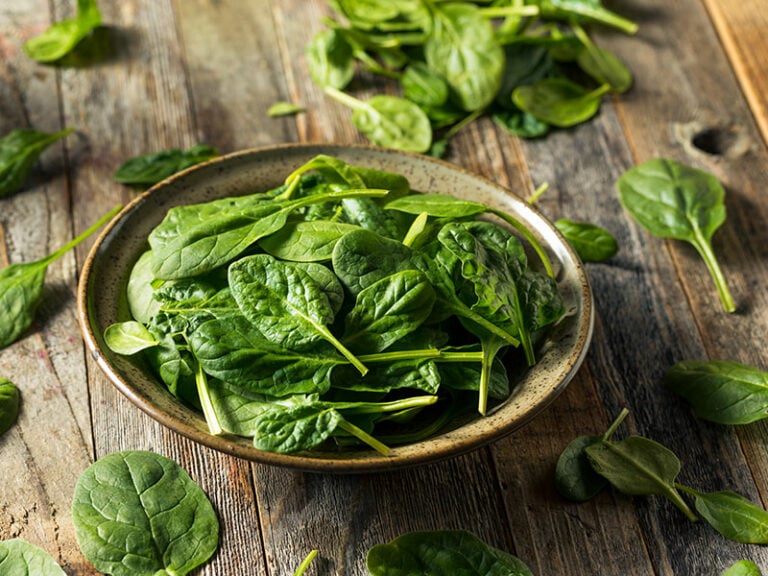
Spinach
Spinach is a leafy green vegetable that’s rich in vitamins and minerals. It’s often eaten cooked or raw in salads.
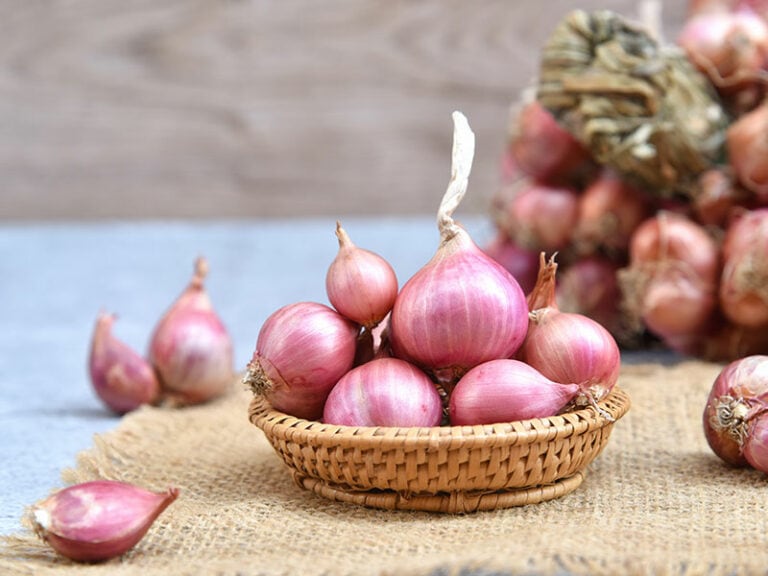
Shallot
Shallot is a type of onion with a mild flavor, used in cooking to add depth to dishes. When raw, shallot is rather pungent, having a strong profile.
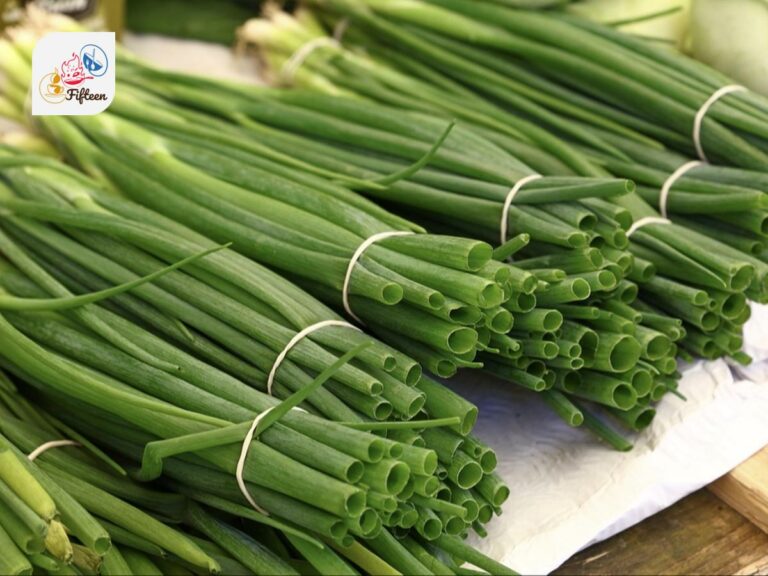
Scallion
Scallion is a type of young onion known for its green stalk and mild taste. These green onions are often used both raw and cooked.
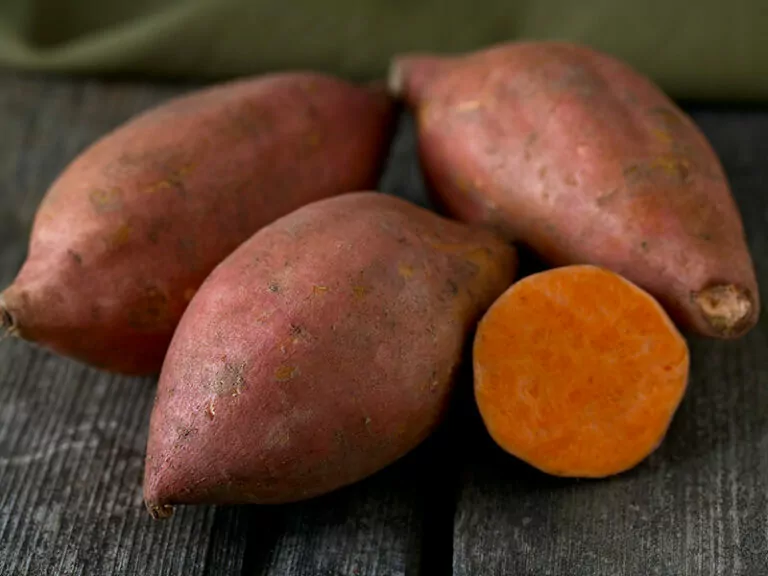
Sweet Potato
Sweet potato is a root vegetable that tastes sweet and has an orange inside. It can be baked, roasted, or mashed for a starchy texture.
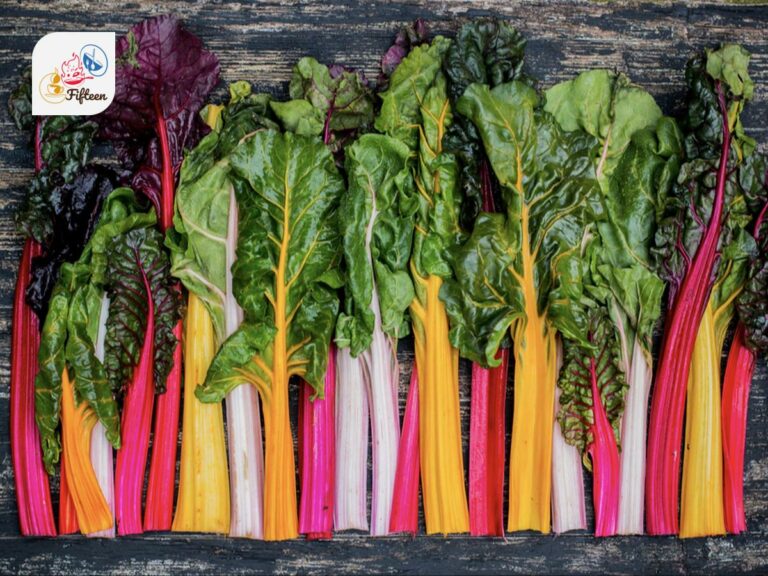
Swiss Chard
Swiss chard is a leafy vegetable with big, green leaves and colorful stalks. It can be cooked in many ways and is full of nutrients.
There are more options when it comes to S-starting vegetables, giving you an opportunity to uncover more interesting options.
Leave a comment in the section below and let me know your thoughts. If you think these fruits are interesting and useful, please share them with your friends and loved ones.
Don’t go anywhere yet because there are many other letters for fruits that are waiting for you to discover!



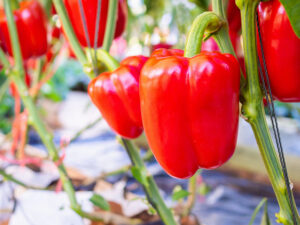
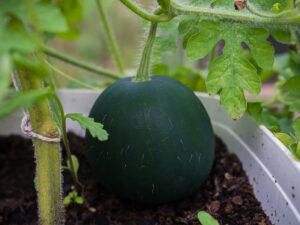
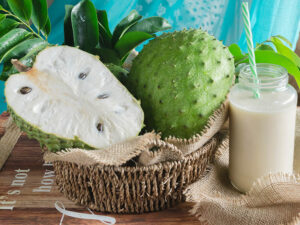
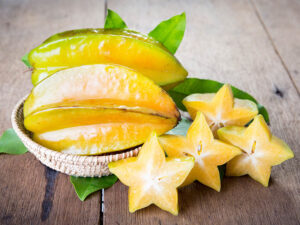
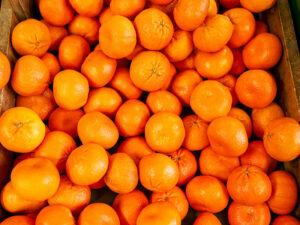
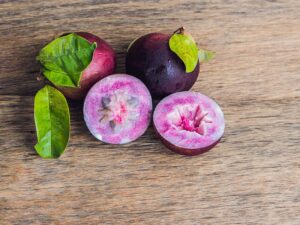
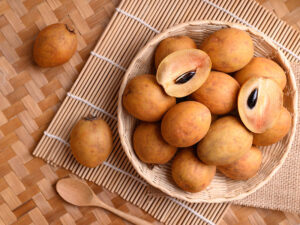
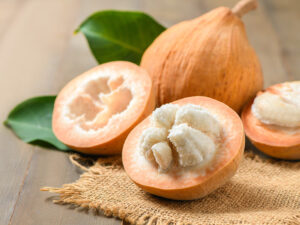
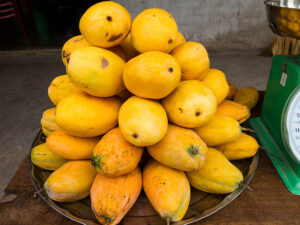
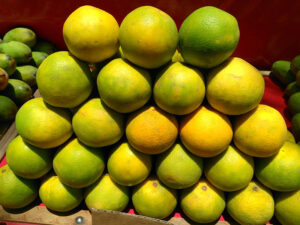
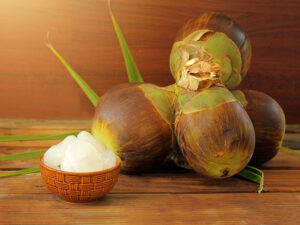
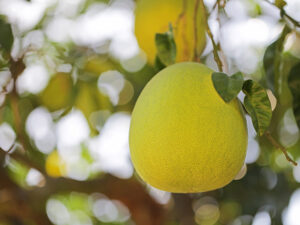
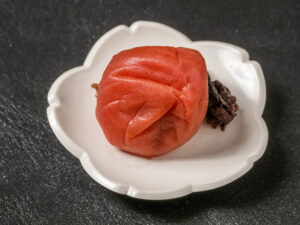
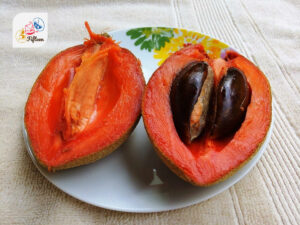
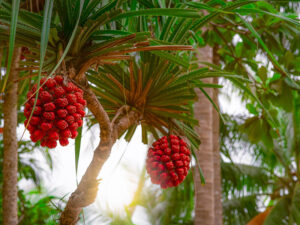
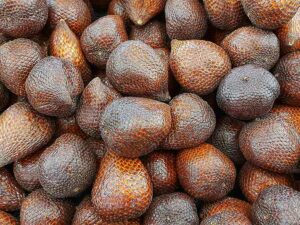
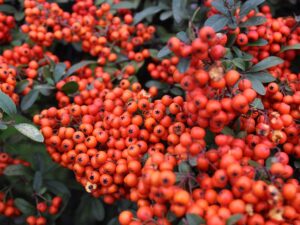
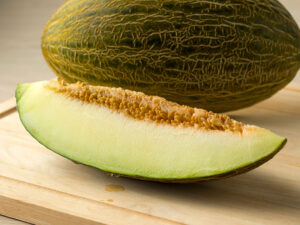
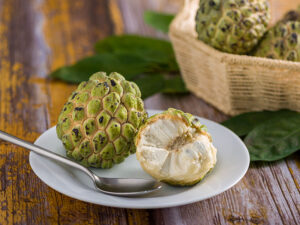
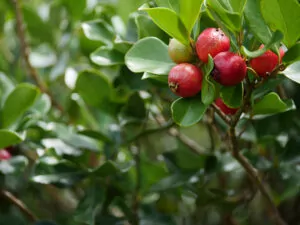
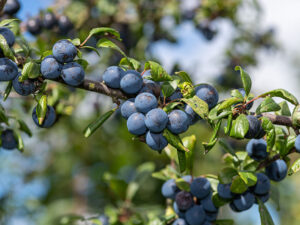
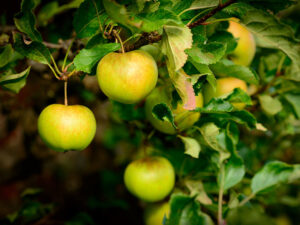
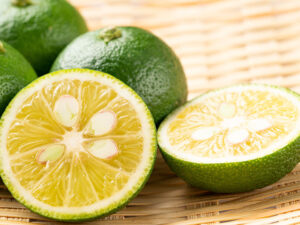
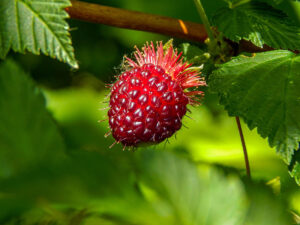
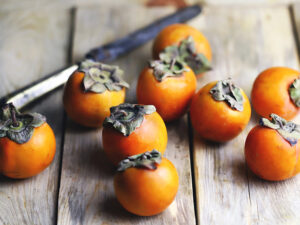
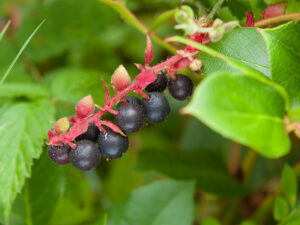
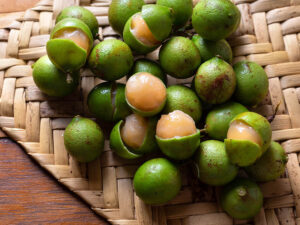
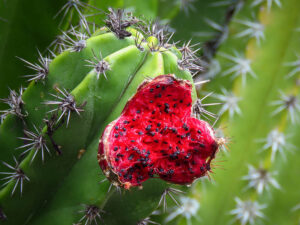
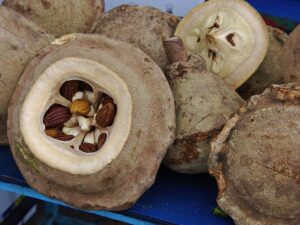

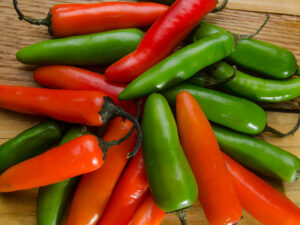
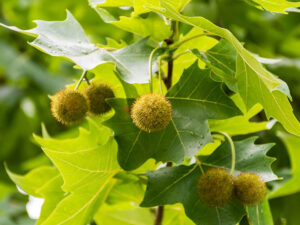
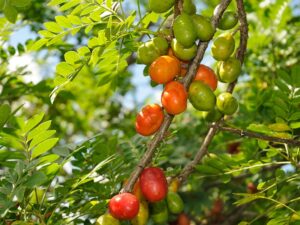
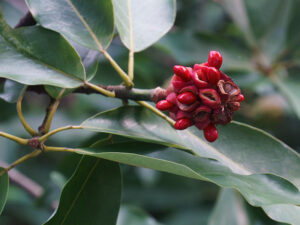
Jamie Scott
Editor in Chief, Senior Content Writer
Expertise
Home Cooking, Meal Planning, Recipe Development, Baking and Pastry, Food Editor, Cooking-video Maker, Western Food Evaluation Expert
Education
Le Cordon Bleu College of Culinary Arts
Local Community College, New York, NY
Jamie Scott is a skilled culinary expert and content creator specializing in Western cuisine. With over 15 years in the culinary field and formal training from Le Cordon Bleu, Paris, Jamie deeply understands how to blend nutrition with delicious flavors. His passion for cooking matches his commitment to making healthy eating accessible and enjoyable.
On Fifteen.net, Jamie brings a fresh perspective to classic dishes and beverages, offering readers insightful recipes, cooking tips, and a fresh view on meal planning that emphasizes taste, health, and simplicity.